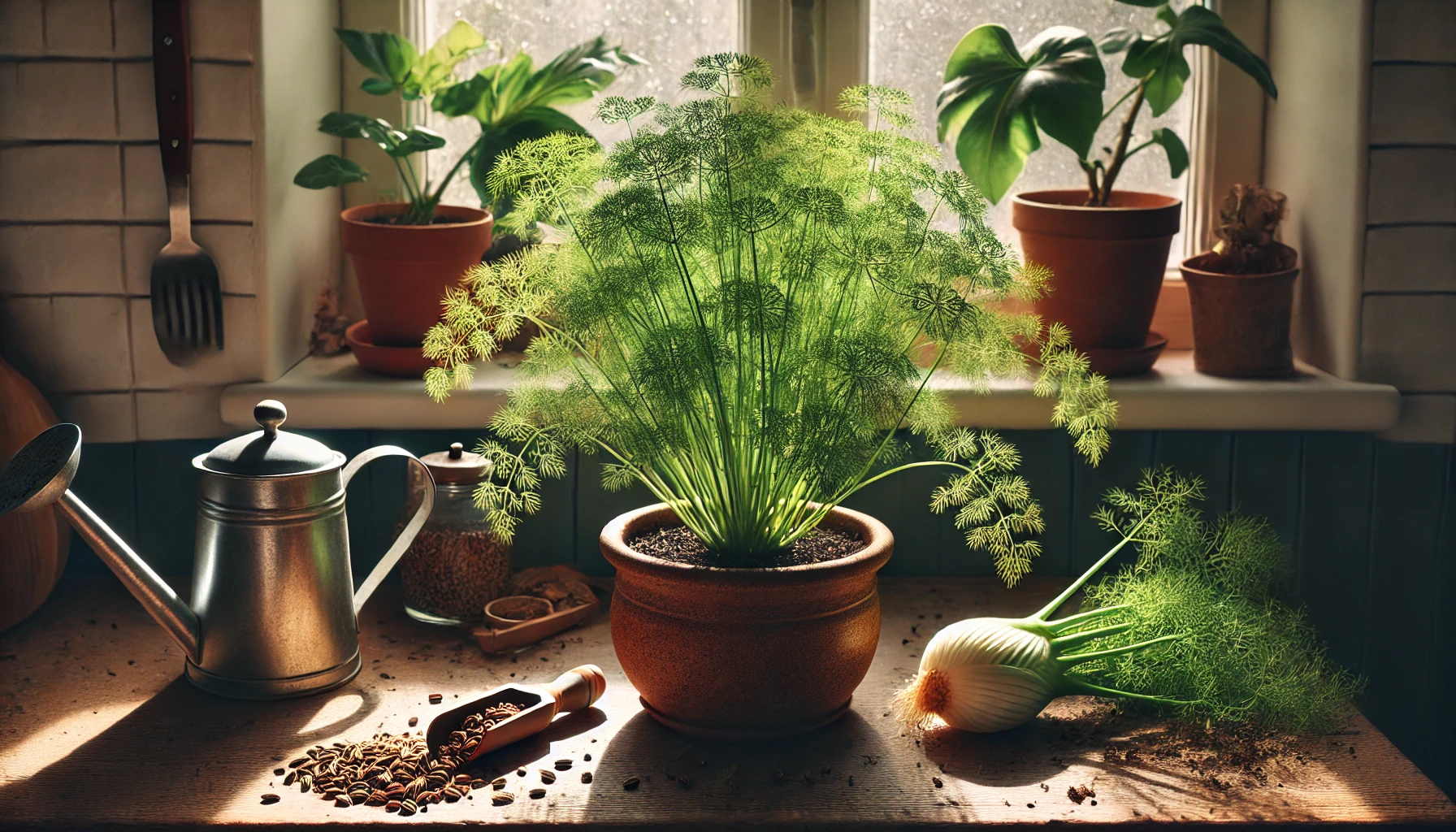Fennel is a flavorful herb and vegetable known for its feathery leaves, aromatic seeds, and crisp bulb. While it’s commonly grown outdoors, fennel can also thrive indoors with the right care. This guide will walk you through growing and maintaining fennel in a home environment, ensuring a continuous supply of fresh leaves, seeds, or bulbs.
1. Why Grow Fennel Indoors?
- Year-round harvest – Enjoy fresh fennel regardless of the season.
- Multi-purpose plant – Use the leaves, seeds, and bulbs for cooking.
- Aromatic and ornamental – Adds beauty and fragrance to your home.
- Low-maintenance – Grows well with minimal care.
2. Choosing the Right Type of Fennel
There are two main varieties of fennel:
- Florence Fennel (Foeniculum vulgare var. azoricum) – Grown for its bulb and commonly used in cooking.
- Herb Fennel (Foeniculum vulgare) – Produces flavorful leaves and seeds but does not form a bulb.
For indoor growing, herb fennel is the better choice because it requires less space and thrives in containers.
3. Selecting the Right Pot and Soil
Choosing the Best Pot
- Use a deep container (12–16 inches) with drainage holes, as fennel has a long taproot.
- A wide pot is beneficial if growing multiple plants.
Best Soil for Fennel
- Use a light, well-draining potting mix enriched with organic matter.
- Add perlite or sand to improve aeration and drainage.
- Avoid compacted or clay-heavy soil.
4. Providing the Right Light Conditions
Fennel requires abundant sunlight for healthy growth.
- Place the pot in a south- or west-facing window where it receives 6–8 hours of direct sunlight daily.
- If natural light is insufficient, supplement with a full-spectrum LED grow light for at least 12–14 hours per day.
- Rotate the pot every few days to ensure even light exposure.
5. Watering and Humidity Needs
Fennel prefers evenly moist but not soggy soil.
- Water when the top inch of soil feels dry.
- Use the “soak and dry” method – water deeply, then allow excess moisture to drain out.
- Avoid watering the leaves to prevent fungal diseases.
- Fennel tolerates moderate humidity and does not require misting.
6. Temperature and Air Circulation
Fennel thrives in stable indoor temperatures.
- Keep the temperature between 60–75°F (16–24°C).
- Avoid placing the plant near cold drafts, heaters, or air conditioning vents.
- Good air circulation prevents disease and mold.
7. Fertilizing for Healthy Growth
Fennel benefits from occasional feeding.
- Use a diluted organic fertilizer (such as compost tea or fish emulsion) once every 4–6 weeks.
- Avoid excessive fertilization, as too much nitrogen can reduce its flavor.
8. Pruning and Harvesting Fennel
Regular pruning encourages healthy growth and prevents legginess.
How to Prune Fennel for Best Growth
- Trim stems once the plant reaches 8–12 inches tall.
- Cut just above a leaf node to encourage branching.
- Remove any yellowing or dead leaves.
Harvesting Fennel for Cooking
- Leaves – Snip fresh leaves as needed for garnishing and seasoning.
- Seeds – Allow flowers to bloom and dry, then collect seeds for culinary use.
- Bulbs – If growing Florence fennel, harvest bulbs when they are 3–4 inches wide.
9. Common Problems and How to Fix Them
1. Yellowing Leaves
Cause: Overwatering or poor drainage.
Solution: Let the soil dry between waterings and ensure proper drainage.
2. Leggy Growth
Cause: Not enough sunlight.
Solution: Move to a sunnier location or use a grow light.
3. Bolting (Flowering Too Early)
Cause: Sudden temperature changes or excessive heat.
Solution: Keep fennel in a stable environment and trim flower stalks early.
10. Propagating Fennel for More Plants
Fennel is best propagated from seeds rather than cuttings.
How to Grow Fennel from Seeds
- Sow seeds ¼ inch deep in moist soil.
- Keep soil slightly damp until seedlings appear (10–14 days).
- Thin seedlings so they have 4–6 inches of space between them.
- Transplant to a larger pot once plants reach 4 inches tall.
11. Companion Plants for Fennel
Fennel does not grow well with most other herbs and vegetables due to its allelopathic properties (it releases chemicals that inhibit the growth of nearby plants). However, it can be grown near:
- Dill – Though similar, they should be grown separately to avoid cross-pollination.
- Lemon balm – Helps attract pollinators if grown outdoors.
Avoid planting fennel near basil, tomatoes, and beans, as it may hinder their growth.
12. Using Fresh and Dried Fennel
Fennel is a versatile herb with many culinary uses:
- Cooking – Adds a mild licorice flavor to soups, stews, and salads.
- Herbal Teas – Used to aid digestion and reduce bloating.
- Pickling – Fennel seeds enhance homemade pickles.
Final Thoughts
Growing fennel indoors is simple and rewarding, providing fresh leaves, seeds, and bulbs for culinary and medicinal use. By following these care tips, you’ll have a thriving fennel plant ready to enhance your home and kitchen.

